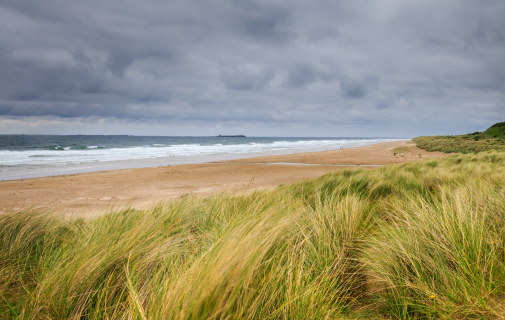Huge tsunami may have wiped out Stone Age communities in Northumberland, according to study
Posted on 25 January 2024
 A huge tsunami devastated Northumberland, leading to a depopulation of Stone Age people
A huge tsunami devastated Northumberland, leading to a depopulation of Stone Age people
The research focuses on a tsunami that hit Britain and northern Europe around 8,000 years ago. The authors think the waves were so huge and the number of deaths were so high that it may have led to a massive dip in Stone Age Britain’s population.
Coastal communities
Researchers believe the tsunami, which hit the eastern coast of the UK particularly hard, was caused by an underwater landslide known as the Storegga slide near Norway and coincides with a time when there was a large population decline in northern Britain.
Dr Jon Hill, an environmental scientist at the University of York who led the research, said although northern Britain had a small population of around 1,000 people at this time, the consequences of the Storegga tsunami were severe.
“A giant tsunami of this size would have devastated Stone Age coastal communities as it occurred in the autumn, when they would have been gathering resources for the winter. The scale of the waves coming in would have been completely different to anything experienced by the people living there - a truly terrifying experience,” he said.
Population plummeted
Previous archaeological studies suggested that the number of sites inhabited across northwest Europe suddenly plummeted around this time, linked to a rapid and sustained drop in temperatures across the continent.
But the research, published in the Journal of Quaternary Science, blames the tsunami for this massive population decline.
Dr Hill added: “Some past fishing societies in tsunami-prone regions such as the northern Pacific have shown some resilience to tsunamis and knew about moving to higher ground. But the tsunami event in northern Britain was more of a freak event, with Stone Age people here having no living memory or ancestral knowledge about how to make themselves safe.”
The massive landslide off the coast of western Norway displaced 2400–3200 cubic km of sediment, and may have triggered waves reaching heights of between three and six metres in northern England, according to the study. This created monster waves of over 20 metres in places, battering Northumberland, the Shetland Islands and much of northern Britain.
Computer simulations
As part of the study computer simulations of the tsunami were used to determine whether the massive waves may have contributed to the population decline or if other factors played more significant roles.
Based on the simulation, researchers suspect there could have been significant mortality due to the tsunami as well as indirect impacts caused by damage to key resources that the ancient people needed to survive.
Dr Hill said: “Alongside the direct mortality from the waves, this tsunami created longer-term impacts on resources for Stone Age people. It would have decimated food supplies so there’s a strong possibility this contributed to the sharp population decline we saw in northern Britain at this time, although this period also saw a rapid sea-level rise and a sharp drop in global temperatures.”
Explore more news

Sodium channels in breast cancer cells a promising target for future treatments, study reveals
Thursday 25 July 2024

Researchers to measure the impact of hot weather on UK classrooms
Wednesday 24 July 2024

Hunter-gatherers kept an 'orderly home' in the earliest known British dwelling, study shows
Tuesday 23 July 2024

Study uses Game of Thrones to advance understanding of face blindness
Tuesday 23 July 2024

York academic contributes to new report on men’s health which reveals disparities between most and least deprived areas in the UK
Wednesday 17 July 2024
Media enquiries
About this research
Researchers believe the tsunami, which hit the eastern coast of the UK particularly hard, was caused by an underwater landslide known as the Storegga slide near Norway and coincides with a time when there was a large population decline in northern Britain. Evaluating the impact of the Storegga tsunami on Mesolithic communities in Northumberland in The Journal of Quarternary Science.
